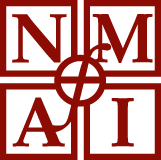

1903, oil on printed paper mounted to pulpboard
24 1/2" x 37 3/4", unsigned
"Penn meets the Quaker thought in the field preaching at Oxford. It shall come to pass that I will pour out my spirit upon all flesh - your sons and your daughters shall prophesy... Your young men shall see visions."


GEORGE WASHINGTON AT THE CONSTITUTIONAL CONVENTION
1911, oil on printed board
40" x 24", signed lower right
Working study for murals at the State Capitol Building, Harrisburg, PA


ABRAHAM LINCOLN DELIVERING THE GETTYSBURG ADDRESS
1911, oil on printed base
40" x 24", signed lower left
Working study for murals at the State Capitol Building, Harrisburg, PA

Violet Oakley
1874–1961
Unlike so many other illustrators, Violet Oakley's family was mostly artists. Consequently, she did not have to struggle to gain permission to study art and as a young girl in Bergen Heights, New Jersey. She was encouraged to attend the Art Students League, which she followed later with many trips to Europe. With two grandfathers members of the National Academy of Design, she described her infatuation with illustration as "hereditary and chronic".
In 1896, Violet Oakley returned to the USA and enrolled at the Pennsylvania Academy of the Fine Arts, but within a year she changed her focus and left for the Drexel Institute School of Illustration to study under Howard Pyle. It was while she was at Drexel that she met her beloved colleagues, illustrators par excellence Elizabeth Shippen Green and Jessie Willcox Smith. Like Maxfield Parrish, Oakley attributed the Pre-Raphaelites with a great influence upon her style as well as Howard Pyle, whose contributions to her career are not unsung. Pyle immediately recognized her talents, her sense of color and composition and her deft handling of large artworks. He felt that her greatest ability was in the large-scale works and encouraged that pursuit although it would mean few smaller scale commissions. Ms. Oakley may have been the only illustration student whose work Pyle admired but that he encouraged to go in a different direction - other than illustration. He continually got her commissions for murals and stained glass windows whenever possible, yet she continued to do smaller illustrations whenever the opportunity presented.
Violet Oakley completed one of her most significant commissions in 1902, "The Creation and Preservation of the Union," which consisted of a series of large murals for the walls of the Governor's Reception Room in the State Capitol Building in Harrisburg, Pennsylvania. The extraordinary working studies for the murals were issued in a portfolio as limited edition art prints, therefore are illustrations by definition.
The finished paintings were a magnificent expression of Oakley's fondness for history and the talent she had honed through years of struggle as a pioneering female illustrator in a mostly male-dominated profession. Elements of historical accuracy are merged eloquently with sturdy skills acquired under the tutelage of Howard Pyle. That commission took four years during which she also painted illustrations from time to time.
In 1911, Edwin Austin Abbey died while working on a project with Ms. Oakley, and she was thusly awarded the balance of his work as well. During the next 19 years, she completed the murals and also illustrated six illuminated manuscripts, and a book on the murals. A committed artist of great integrity, she documented her works well, had numerous exhibitions, and worked up until the day she died in 1961.

